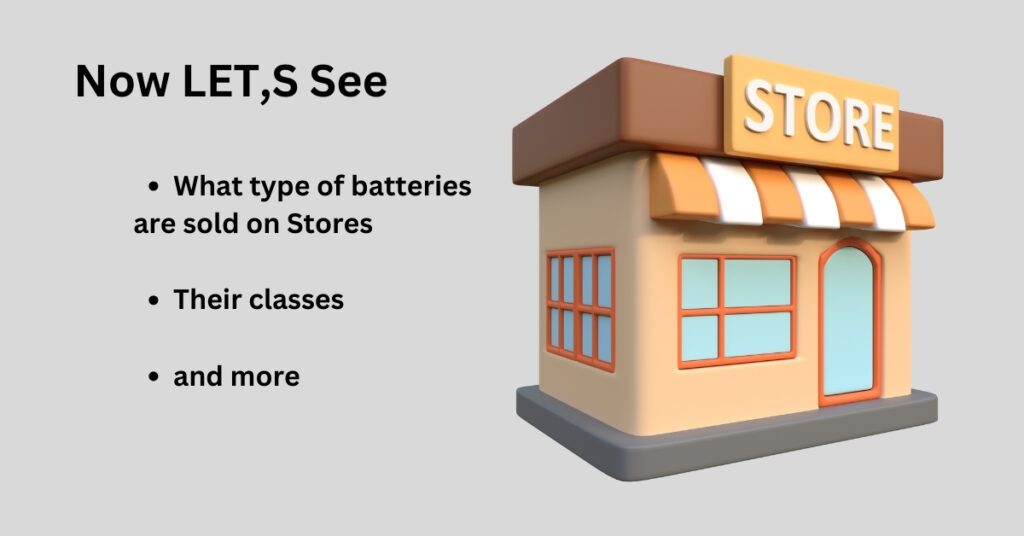I’m going to show you the hazard classes of Automotive batteries, with their original sources and reasons for their classification. You won’t need to search for hazard class of any battery next time, I Promise!
Lead Acid automotive batteries fall under Class 8 – Corrosive Material according to the United States Department of Transportation (DOT) And Hazmat University. Lithium batteries fall under Class 9 – Miscellaneous Hazardous Material according to the United States Department of Transportation (DOT), Hazmat University, and the United Nations Recommendations on the Transport of Dangerous Goods (UNRTDG). Now let’s see the reason for falling these batteries under their corresponding classes.
Automotive Batteries – Class 8 and Class 9
“Corrosive material” (Class 8) means a liquid or solid that causes irreversible damage to living tissue at the site of contact.
Lead Acid Batteries Contain lead and Sulfuric Acid that have skin damage properties.
The substances that do not fit any category fall under class 9 – Miscellaneous Hazardous Material.
So DOT put Lithium Batteries under this class.
Hazardous materials like lead, sulfuric acid, cobalt, nickel, and various electrolytes are commonly found in vehicle batteries.
Automotive batteries at Stores like Walmart

Automotive Batteries Sold at stores like Walmart are mostly from five types of brands:
- Interstate Batteries: These are lead-acid and are related to Class 8.
- Yuasa Battery, Inc: These are also led Acid and are related to Class 8.
- Bosch: Bosch offers Lithium PowerSport Batteries which are related to Class 9.
- Deka Batteries: Deka offers both types of batteries, lead acid, and Lithium, so fall under class 8 and class 9.
- VARTA: Varta mostly offers batteries that have lithium and are related to Class 9.
Proper Handling and Disposal of Automotive Batteries
For proper handling, follow these Steps:
- Wear Protective Gear
- Handle batteries with care and avoid tipping or shaking them excessively.
- Place them securely in the vehicle’s battery tray.
- Disconnect the negative terminal first, followed by the positive terminal for removing or replacing.
- Avoid stacking batteries, as this can lead to short circuits.
For disposal, you can take the following steps:
- Visit recycling centers or collection points as they accept them.
- Contact retailers or manufacturers that exchange batteries with old ones.
- Follow Local Regulations or Consult Municipal Waste Management.
- Do not dispose of them in regular trash bins or landfills.
Other batteries and their classes
There are two main types of batteries:
Non-rechargeable Batteries (Primary Batteries):
- Alkaline Batteries: They contain zinc, manganese dioxide, and potassium hydroxide. They are non-hazardous.
- Zinc-carbon Batteries: They have zinc, manganese dioxide, carbon rod, and ammonium chloride. Considered non-hazardous for normal use.
Rechargeable Batteries (Secondary Batteries):
- Nickel-Metal Hydride (NiMH) Batteries: They consist of nickel oxide hydroxide, a potassium hydroxide electrolyte. They are less hazardous than Lithium-ion but can release toxic substances if mishandled.
- Nickel-Cadmium (NiCd) Batteries: They comprise a cadmium, a nickel(III) oxide-hydroxide, and a potassium hydroxide electrolyte. Cadmium is a toxic heavy metal and May fall in Class 9.
More Examples of Class 8 and Class 9 hazardous classes
Class 8 – Corrosive Materials can cause skin destruction and are the following:
- Sulfuric acid
- Hydrochloric acid
- Nitric acid
- Sodium hydroxide
- Potassium hydroxide
- Ammonium hydroxide
- Phosphoric acid
- Acetic acid
- Battery acid (sulfuric acid)
- Sodium hypochlorite
Class 9 – Miscellaneous Hazardous Materials present a hazard during transportation and are the following:
- Asbestos
- Dry ice (carbon dioxide, solid)
- Consumer commodities with hazardous substances
- Engine, internal combustion, flammable liquid-fueled
- Magnetized material
- Aviation regulated liquid
- Self-heating substance
- Lithium batteries
- First aid kits with hazardous materials
- Ammonium nitrate fertilizer
Easy Steps to Ship Automotive Batteries

The USA Department of Transport has provided a lot of details for shipping hazardous materials, but here is a general guide:
Classify the Battery: Classify the battery depending on some factors like the type of battery, its size, and the materials it contains.
Select Proper Packaging: Pack batteries DOT requirements for hazardous materials. Use sturdy boxes, cushioning materials, and labels.
Labeling: Label appropriate hazardous materials labels and markings on packages like the type of materials, hazardous class, or specific division.
The Untold Hazard Class Secrets of Automotive Batteries
Marking: Proper shipping name, identification number, and other required markings must be mentioned on the package.
Documentation: A shipping manifest or bill of lading is important in documentation. The documentation should include information about the contents, classification, and emergency contact information.
Compliance with Special Provisions: Beware that batteries have different specific requirements or exemptions and comply with them.
Follow Packaging Instructions: Follow the manufacturer’s instructions for packaging. Manufacturers mostly provide details about the specific type of automotive battery you are shipping.
Check State and Local Regulations: Check additional state or local regulations for your package. You can do this by searching on Google with the state name.
Carrier Requirements: Ask the carrier or brokers for any additional requirements from their side and must fulfill them.
You Can Also Read: How to Start a Stationery Business in 2024
Bonus Point: Types of Batteries and their uses
Lead-acid Batteries are the source for automotive. There are two types of lead-acid batteries, Absorbent Glass Mat (AGM) Batteries and Gel Batteries.
Lithium Batteries are the source for portable electronics and electric vehicles. There are six types of lithium batteries.
Alkaline Batteries are the source for remote controls and flashlights.
Rechargeable Batteries are the source for cameras and laptops.
Non-rechargeable Batteries are the source for wall clocks, blood pressure monitors, etc.
The Untold Hazard Class Secrets of Automotive Batteries
Someone was saying that automotive batteries fall under class 8 and others were saying these fall under class 9. I solved the Mystery:
- Automotive batteries fall under both classes due to their different types.
- I gave the correct answer to your question and one question from my side.
- Smartphone batteries fall under which category?
- Let me know in the comment box.
